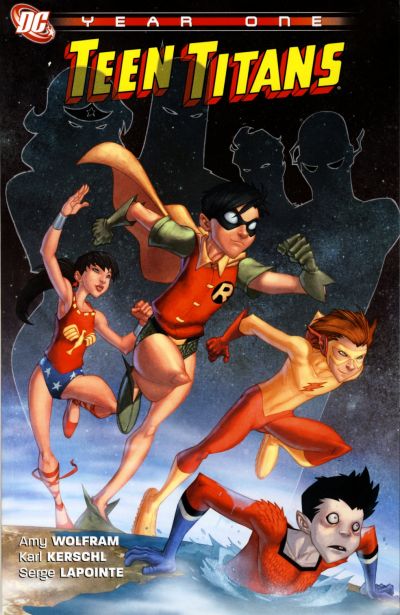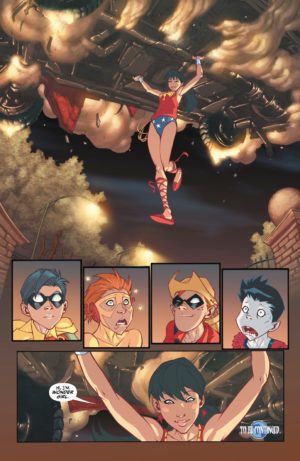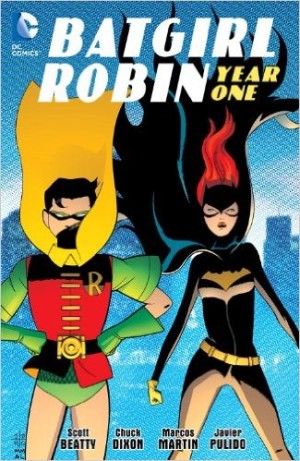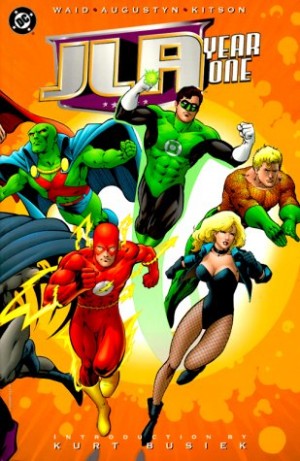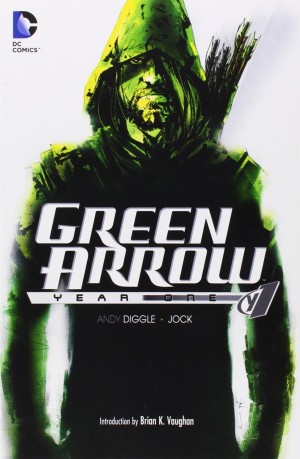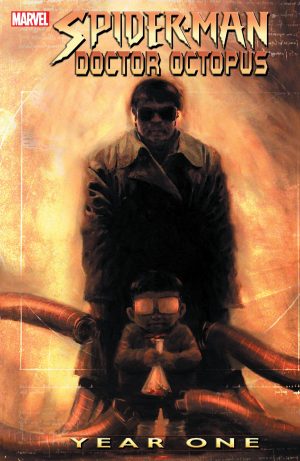Review by Frank Plowright
The 1960s Teen Titans origin story has Aqualad, Kid Flash and Robin arrive in a small town to investigate all teenagers disappearing, and then battling a villain calling himself Mr Twister. It’s referenced here, but the resolutely cheerful trio who showed no characteristics beyond good and heroic were no longer fit for purpose in 2008, so Amy Wolfram and Karl Kerschl were tasked with creating a more applicable continuation. Wonder Girl, who turned up for the second Titans adventure, is added, arriving in the USA to find her sister, and so is Speedy, another early addition. Both Aqualad and Robin are shown to be intimidated to a greater or lesser degree by Aquaman and Batman, while Kid Flash is more confident, but lacks patience and diplomacy.
Wolfram’s initial plot builds on that, ramping up the negative characteristics of the adult heroes to the point where they’re no longer heroic, and the Teen Titans having to take them on despite a combination of respect and intimidation.
Kerschl opts for cartooning rather than naturalism, and draws the team as if only just into their teens, which has pluses and minuses. It accentuates the gulf between the Teen Titans and the adult heroes, and marginally justifies the characterisation of Wonder Girl as a 1950s sitcom teen falling in love at the drop of a hat. Yet the script notes Speedy as old enough to drive and to go on a date with Wonder Girl. It pulls against Kerschl’s art, which is otherwise very decorative and given additional depth by colourists Stephane Peru and John Rauch.
Halfway through, a convenient separation point is provided. The opening menace has been dealt with, so Wolfram explores the personalities and insecurities of the cast, but it’s in very broad strokes. That suggests a graphic novel created prioritising viewers of the animated show more than those who’ve followed the cast in comics over the years, who may be less pleased at Aqualad constantly quivering timidly and Kid Flash’s large ego. It’s fun, and well drawn, but not a revision to stand the test of time.
